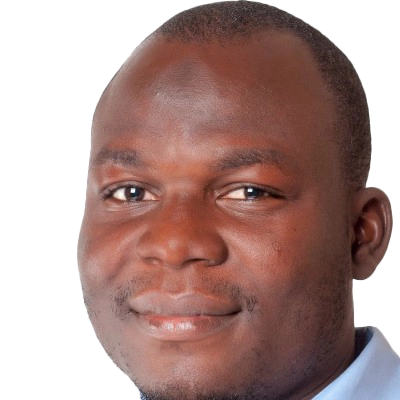Research Group Holger Rauhut
Holger Rauhut
is Professor of Mathematical Data Science and Artificial Intelligence at LMU Munich.
His focus on the intersection of mathematics and artificial intelligence, aiming for both a mathematical understanding of artificial intelligence and artificial intelligence for mathematical problems.
Team members @MCML
PostDocs
PhD Students
Recent News @MCML
Publications @MCML
2025
[13]
S. Avesani • L. Ling • F. Marchetti • T. Wenzel
Sobolev Algorithm for Local Smoothness Analysis (SALSA) via Sharp Direct and Inverse Statements.
Preprint (Dec. 2025). arXiv
Sobolev Algorithm for Local Smoothness Analysis (SALSA) via Sharp Direct and Inverse Statements.
Preprint (Dec. 2025). arXiv
[12]

S. Abdulsalaam • M. Ali
Rank-sparsity decomposition for planted quasi clique recovery.
Journal of Global Optimization. Nov. 2025. DOI
Rank-sparsity decomposition for planted quasi clique recovery.
Journal of Global Optimization. Nov. 2025. DOI
[11]

A. A. Guth • S. Abdulsalaam • H. Rauhut • D. Heberling
Numerical Analysis of Mask-Based Phase Reconstruction in Phaseless Spherical Near-Field Antenna Measurements.
Sensors 25.18. Sep. 2025. DOI
Numerical Analysis of Mask-Based Phase Reconstruction in Phaseless Spherical Near-Field Antenna Measurements.
Sensors 25.18. Sep. 2025. DOI
[10]
E. M. Achour • K. Kohn • H. Rauhut
The Riemannian Geometry associated to Gradient Flows of Linear Convolutional Networks.
Preprint (Jul. 2025). arXiv
The Riemannian Geometry associated to Gradient Flows of Linear Convolutional Networks.
Preprint (Jul. 2025). arXiv
[9]
T. Karvonen • G. Santin • T. Wenzel
General superconvergence for kernel-based approximation.
Preprint (May. 2025). arXiv
General superconvergence for kernel-based approximation.
Preprint (May. 2025). arXiv
2024
[8]

F. Hoppe • C. M. Verdun • H. Laus • F. Krahmer • H. Rauhut
Non-Asymptotic Uncertainty Quantification in High-Dimensional Learning.
NeurIPS 2024 - 38th Conference on Neural Information Processing Systems. Vancouver, Canada, Dec 10-15, 2024. URL
Non-Asymptotic Uncertainty Quantification in High-Dimensional Learning.
NeurIPS 2024 - 38th Conference on Neural Information Processing Systems. Vancouver, Canada, Dec 10-15, 2024. URL
[7]

F. Hoppe • C. M. Verdun • H. Laus • S. Endt • M. I. Menzel • F. Krahmer • H. Rauhut
Imaging with Confidence: Uncertainty Quantification for High-dimensional Undersampled MR Images.
ECCV 2024 - 18th European Conference on Computer Vision. Milano, Italy, Sep 29-Oct 04, 2024. DOI GitHub
Imaging with Confidence: Uncertainty Quantification for High-dimensional Undersampled MR Images.
ECCV 2024 - 18th European Conference on Computer Vision. Milano, Italy, Sep 29-Oct 04, 2024. DOI GitHub
[6]
F. Hoppe • C. M. Verdun • F. Krahmer • M. I. Menzel • H. Rauhut
With or Without Replacement? Improving Confidence in Fourier Imaging.
CoSeRa 2024 - International Workshop on the Theory of Computational Sensing and its Applications to Radar, Multimodal Sensing and Imaging. Santiago de Compostela, Spain, Sep 18-20, 2024. DOI
With or Without Replacement? Improving Confidence in Fourier Imaging.
CoSeRa 2024 - International Workshop on the Theory of Computational Sensing and its Applications to Radar, Multimodal Sensing and Imaging. Santiago de Compostela, Spain, Sep 18-20, 2024. DOI
[5]

G. M. Nguegnang • H. Rauhut • U. Terstiege
Convergence of gradient descent for learning linear neural networks.
Advances in Continuous and Discrete Models 2024.23. Jul. 2024. DOI
Convergence of gradient descent for learning linear neural networks.
Advances in Continuous and Discrete Models 2024.23. Jul. 2024. DOI
2023
[4]
F. Hoppe • C. M. Verdun • H. Laus • F. Krahmer • H. Rauhut
Uncertainty Quantification For Learned ISTA.
MLSP 2023 - IEEE Workshop on Machine Learning for Signal Processing. Rome, Italy, Sep 17-20, 2023. DOI
Uncertainty Quantification For Learned ISTA.
MLSP 2023 - IEEE Workshop on Machine Learning for Signal Processing. Rome, Italy, Sep 17-20, 2023. DOI
[3]
F. Hoppe • F. Krahmer • C. M. Verdun • M. I. Menzel • H. Rauhut
Uncertainty quantification for sparse Fourier recovery.
Preprint (Sep. 2023). arXiv
Uncertainty quantification for sparse Fourier recovery.
Preprint (Sep. 2023). arXiv
[2]
F. Hoppe • F. Krahmer • C. M. Verdun • M. I. Menzel • H. Rauhut
Sampling Strategies for Compressive Imaging Under Statistical Noise.
SampTA 2023 - 14th International Conference on Sampling Theory and Applications. Yale, CT, USA, Jul 10-14, 2023. DOI
Sampling Strategies for Compressive Imaging Under Statistical Noise.
SampTA 2023 - 14th International Conference on Sampling Theory and Applications. Yale, CT, USA, Jul 10-14, 2023. DOI
[1]
H.-H. Chou • H. Rauhut • R. Ward
Robust implicit regularization via weight normalization.
Preprint (May. 2023). arXiv
Robust implicit regularization via weight normalization.
Preprint (May. 2023). arXiv
©all images: LMU | TUM










